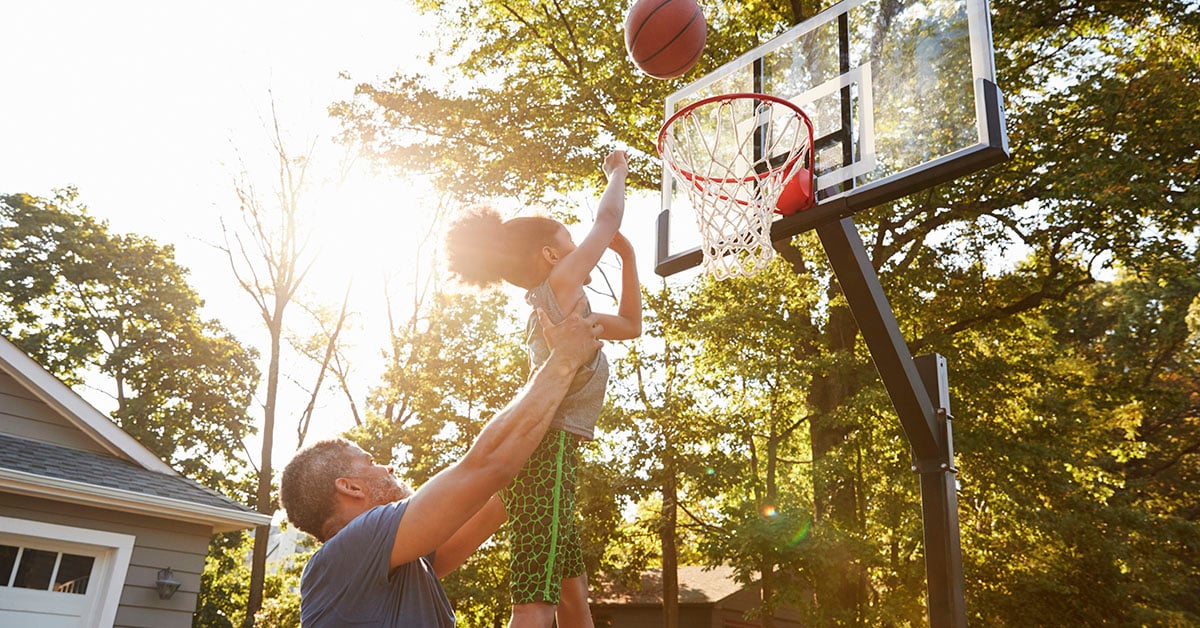
You’re in the market for a basketball system. You remember how much fun you had playing basketball growing up and are sure it will be just as much of a joy for your kids.
But then you stop and ask yourself: How much do my kids really know about basketball? And can I actually teach them?
Don’t worry. Getting your kids ready for their new basketball system is easier than you might think. Here are a few tips from USA Basketball, the national governing body for basketball in the United States, on teaching kids the fundamentals of the game.
1. Dribbling
If you’re working with younger children, try to encourage them to dribble using both hands. And let them know that to truly master dribbling, they’ll need to work on this skill outside of regular practice hours. It’s something they can do at in their yard, out in your driveway under their basketball system or even while watching TV, the USAB guide says.
“The more they become accustomed to the feel of the ball the better they will become dribbling without looking down at the ball. Remind players that this takes time — and not to be discouraged with the initial frustrations of dribbling a basketball.”
You can help them work on dribbling by setting up some cones or chairs in a row and have them attempt to dribble as fast as possible while zigzagging through the row. It’s a method that forces players to use both hands and keep their gazes away from the ball.
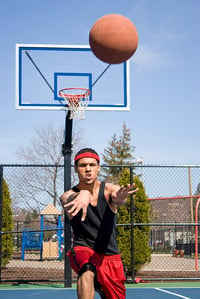 2. Passing
2. Passing
There are two types of passes involved in basketball: the bounce pass and the chest pass. Players need to know both of them to master the game.
To learn the chest pass, players should hold the ball with both hands, and pass it to teammates by pushing the ball outward from their chest with both hands. The other player should catch the ball with both hands.
With the bounce pass, the player is still throwing the ball to a teammate using both hands. However, the ball is bounced once before being caught. It’s tricky because there player receiving the ball Is usually in motion, meaning the player passing the ball needs to gauge how fast their teammate is moving.
3. Shooting
Again, this is something that will take a lot of repetition to master. For younger players, consider having them practice with a smaller ball, or let them shoot with an adjustable hoop that you can lower.
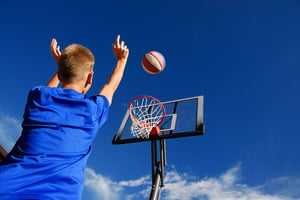 Emphasize that the ball should rest on the fingers, not in the palm, and roll off the fingertips as they shoot. The player should use their dominant hand to get the ball into shooting position, with the other hand providing balance.
Emphasize that the ball should rest on the fingers, not in the palm, and roll off the fingertips as they shoot. The player should use their dominant hand to get the ball into shooting position, with the other hand providing balance.
Players should aim for the back of the room when they shoot, hoisting the ball “in a soft trajectory at the basket, not in a straight line,” with the shooter flicking their fingers and wrist toward the basket. If the ball doesn’t make the basket, players need to follow the shot and try to contend for a rebound.
4. Rebounding
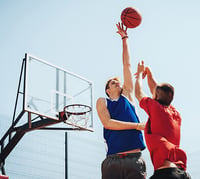 “The top coaches will tell you defense and rebounding win games,” the USAB guide says.
“The top coaches will tell you defense and rebounding win games,” the USAB guide says.
And rebounding is a matter of proper positioning. As soon as a shot is in the air, the player on defense needs to turn and “box out” the shooter. By positioning themselves between the basket and the opponent, they have a better shot of collecting the rebound.
5. Defense
There are two schools of defense in basketball: man-to-man, and zone, each with its own advantages.
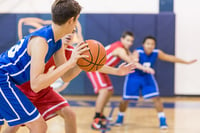 In man-to-man defense, each player must guard another player on the opposing team. If you’re working with younger children, have them memorize their opposite player’s jersey number.
In man-to-man defense, each player must guard another player on the opposing team. If you’re working with younger children, have them memorize their opposite player’s jersey number.
With zone defense, players are responsible for guarding a particular zone of the court. It’s a good system for teams that are facing opponents that are either too big or too fast to guard one-on-one.
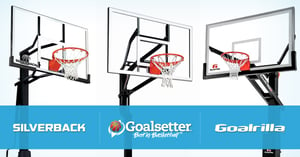 Are you considering purchasing a basketball system for your children? Visit Swingset & Toy Warehouse, where we carry and install hoops from trusted brands like Goalsetter, Goalrilla and Silverback. We’re confident you’ll find the best basketball hoop for your family.
Are you considering purchasing a basketball system for your children? Visit Swingset & Toy Warehouse, where we carry and install hoops from trusted brands like Goalsetter, Goalrilla and Silverback. We’re confident you’ll find the best basketball hoop for your family.






